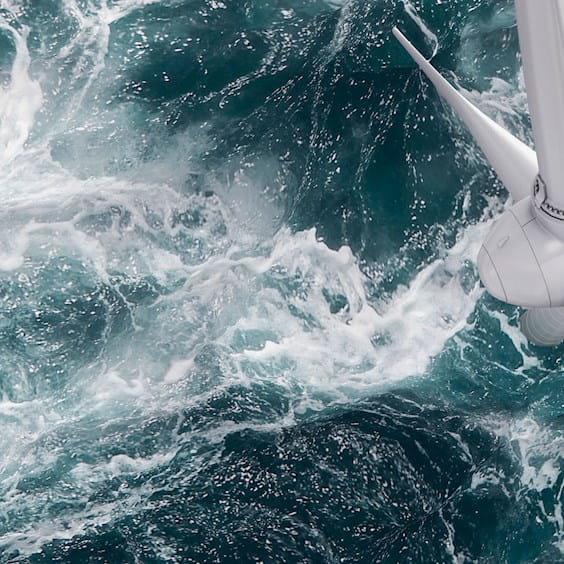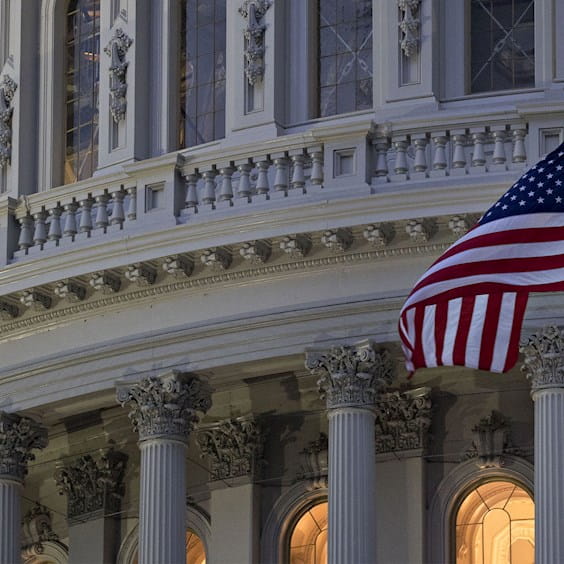European cleantech investments in 2023: Trends, incentives, and a transatlantic showdown
A transatlantic tug of war for cleantech investment is taking shape—and the stakes are high
The U.S. and EU are both in a race to attract, develop, and scale significant sources of renewable energy and enable clean technologies—presenting plentiful targets and opportunities for investors.
In response to the U.S. Inflation Reduction Act (IRA), which includes billions in potential tax credits and clean energy investment, the European Union is moving ahead with its own plans to boost Europe’s competitiveness in developing sustainability-focused industries.
The global cleantech market will be worth an estimated €600 billion per year by 2030. Those technologies will play a central role in decarbonization efforts to combat climate change, with adoption likely to accelerate in the coming decades. By mid-century, for example, renewable deployments are expected to quadruple, while heat pump use will increase by a factor of six and electric vehicle production will expand 15-fold.
The countries that lead investments in these technologies now are likely to see substantial dividends in the decades to come.
But it will cost money for Europe to reach their desired destination: Achieving Europe’s green energy goals will require an additional €620 billion in annual investment, with the lion’s share needing to come from private funding sources.
Amid persistent economic uncertainty, the ongoing war in Ukraine, and with future billions on the line, here are three considerations defining the European cleantech investment landscape for 2023—and where it might be headed in the second half of the year.
European investors are looking for a safe bet
In many ways, the EU has been a pacesetter in cleantech investment. Europe’s commitment to transitioning to a low-carbon economy, coupled with its focus on renewable energy sources, have made it a highly attractive destination for investors. In fact, according to our 2023 report on Preparing for the Next Wave of Cleantech Investment, based on survey responses from 200 private equity and corporate development executives, sheds light on this trend,87% of European respondents say the most appealing potential cleantech deal targets are in Europe.

While many European investors are experienced in this sector—our survey found that a majority (84%) have done multiple cleantech deals before and 41% have done at least three in the last 24 months alone—they also appear to be less risk tolerant than their American counterparts. Only 5% of European respondents report targeting seed or series A stage startups, compared with 16% in the U.S.
More broadly, investors are prioritizing energy production and proven assets at the top of the value chain in their capital allocation. Renewable energy was the leading target for European respondents’ most recent cleantech deal, outranking infrastructure and storage, while auxiliary products and services such as optimization software lagged far behind.
For example, some of the largest European cleantech investments in the first half of the year have been in late-stage renewable energy companies. German electricity startup 1KOMMA5°’s reached a €430 million series B round (for a €1 billion valuation) and solar company Enpal successfully raised a €215 million series D round (for a €2.2 billion valuation).
Investors appear less willing to take a risk on nascent technologies and their less established applications. And tried-and-tested renewable technologies, especially wind energy, are far more popular targets than less mature cleantech subsectors like hydrogen gas, energy-as-a-service and sustainable materials, according to our survey.
This may be why 80% of European corporate investors say their most recent cleantech deal has already generated value—and why some investors are taking a closer look at the U.S.
The EU is struggling to match generous U.S. cleantech subsidies
"The EU and UK have historically led the clean energy transition. However, with once-in-a-generation levels of federal funding and tax incentives from the IIJA and IRA, the US is now poised to potentially surpass Europe in overall clean infrastructure investment in the near to mid-term. This shift is drawing the attention of European cleantech investors towards the US market. The funds primarily stem from the IRA, offering an estimated $369 billion for energy security and climate change initiatives in the form of business incentives and tax credits. Additionally, a substantial portion of the $550 billion allocated in the 2021 Infrastructure Investment and Jobs Act (IIJA) is designated for investments in sectors such as clean energy, power and transport, and energy efficiency initiatives."
The U.S. is beginning to attract European cleantech investors, thanks to its federal subsidies for clean energy and sustainable technologies made in North America.

The utility of now: How the IIJA and IRA are expediting the ‘utility of the future’ into the present
Read MoreInvestors have taken note, especially in a constrained funding environment. The Financial Times reports that “European clean technology start-ups have attracted less than half as much investment as US counterparts” since the IRA went into effect last year. As the subsidies have lured the likes of Volkswagen, energy company Vitol, and battery producers Northvolt and Freyr across the Atlantic, Europe faces a trade challenge.
The EU’s response to the IRA and IIJA includes the Net-Zero Industry Act, announced earlier this year, which sets domestic manufacturing capacity targets for cleantech and allocates funding to bolster clean investments, though it may take over a year to become law. In actual numbers, the value of the green subsidies available in the EU and the IRA are largely comparable, though not without important distinctions.
Crucially, the U.S. subsidies are simpler than those offered by the EU and provide greater certainty to investors facing a long-time horizon. According to Thomas Pellerin-Carlin, EU Programme Director at the Institute for Climate Economics, the U.S. subsidies make for an easier business case, as “the IRA offers simple-to-understand instruments, that reward US producers based on the volume of renewable power and hydrogen achieved” and “benefits from the IRA exist even if the project is delayed by a few years.”
More broadly, EU plans to meet a renewable energy target of 45% by 2030 may not be enough to reach that goal due to insufficient policy support and extending permitting delays for such projects, according to the International Energy Agency.
Suzana Carp, senior European climate and energy policy specialist at Cleantech for Europe, noted that “the next 18 months could make or break the EU's chance to be the global leader” in cleantech. Recognizing how critical this year will be, the EU is examining further regulatory changes to invite investment.
The EU's influence on future cleantech investment opportunities
Investors are responsive to changes in the funding calculus. In fact, our survey found that a significant majority of European investors (78%) report having had their appetite for deals increase in response to regulatory changes.
To that end, the EU put forward regulatory proposals this summer that may shift the playing field. Here are two key proposals under consideration:
- European Sustainability Reporting Standards (ESRS): These standards, which apply to both large EU and large non-EU companies operating in the EU, cover “the full range of environmental, social, and governance (ESG) issues, including climate change, biodiversity and human rights” as well as “information for investors to understand the sustainability impact of the companies in which they invest.” They’re also designed to be highly interoperable with global standards from the International Sustainability Standards Board (ISSB) and the Global Reporting Initiative (GRI) to minimize the reporting burden on companies.
- Sustainable Finance Package: This package of measures is designed to strengthen the EU’s existing sustainable finance network, encouraging private funding for transition projects and cleantech technologies while making the current sustainable finance network easier to use—reflecting the complaints that the existing system is overly complex. To increase transparency for sustainable investments, it also proposes new rules for rating ESG providers, which could hold promise for future investments. Our survey found that more than a third of European investors (36%) believe the single most important driver of increased investment in cleantech is the scale of ESG-related funds ready for deployment. Greater clarity on ratings could accelerate the investment process.
At the same time, more funding is on the way for EU cleantech. The European Investment Bank announced earlier this summer that it plans to allocate an additional €45 billion for projects such as renewables, batteries, grid improvements and carbon capture associated with the REPowerEU program, adding to a €30 billion package announced late last year.
These factors will become increasingly important as technologies and applications in cleantech mature, investment accelerates in the EU and beyond, and countries continue to look to fulfill their decarbonization goals.



